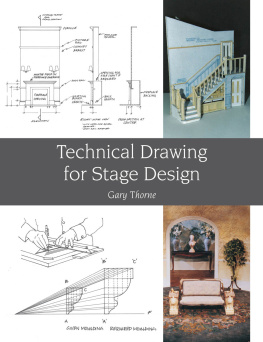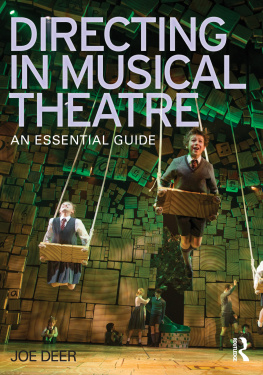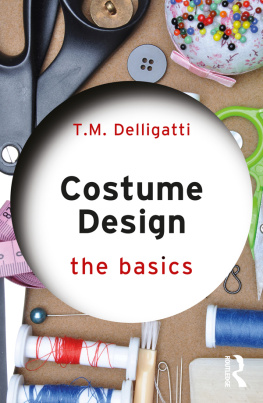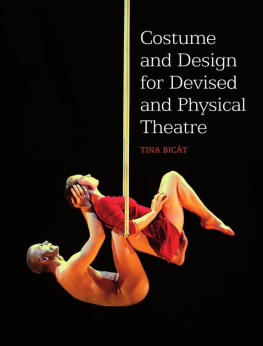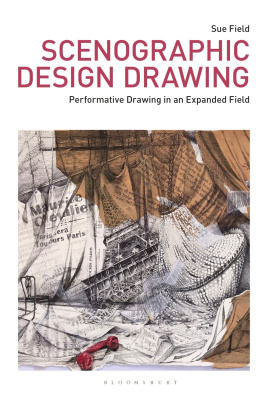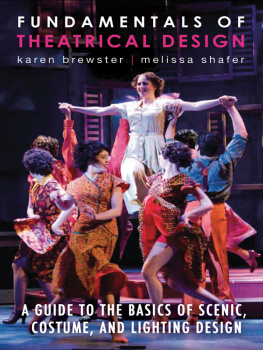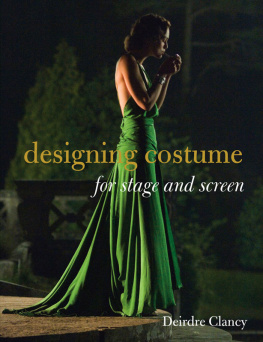SO YOU WANT TO
BE A THEATRE DESIGNER?
Michael Pavelka
Foreword by Alison Chitty

NICK HERN BOOKS
London
www.nickhernbooks.co.uk
Contents
Magicians should do their magic to enchant us,
then they should teach us their tricks.
Augusto Boal
Foreword
Theatre designers work from original material, be it written, composed, devised or improvised. Together with the director we interpret the material and design a physical world that frames the action and holds the performers. We must be artists, sculptors, painters and architects. We must be collaborators and negotiators, practical, determined, always keeping a sense of humour.
I have worked all my life in the theatre, starting in repertory theatre in Stoke-on-Trent in the 1970s. I learned my craft with extremely limited resources over the course of eight years. I worked on a great range of plays and documentaries. The work was political and it made sense to me. Stoke is a theatre-in-the-round where the focus is on the actors and what they say; this led me first and foremost to respect the writer and his material and secondly the performers. This philosophy has been the basis of all my work. After Stoke, I was resident designer at the National Theatre for eight years and subsequently I have worked in the UK and all over the world in theatre, opera and film.
Michael Pavelka has also worked all over the world in all forms of theatre and is also an experienced educator, running courses at BA and MA levels. He has written a book that is a comprehensive introduction and guide to the world of the professional theatre designer, a key book for anyone contemplating entering the profession and embarking on a career in theatre design. Before anything else, students of theatre design should read this book, and I wish it had been available for the students of the postgraduate Motley Theatre Design Course, where I was director for twenty years.
However, this is much more than a book for beginners. I would also urge those designers who have already started working to read it to get the benefit of Michaels overview and his many years of experience.
So You Want To Be A Theatre Designer? puts theatre design in its context. It helps us to understand our heritage and where we are in the evolution of the ever-changing and developing art of theatre design. It inspires us to embrace all that is good that has gone before, while encouraging us to look forward, relishing innovation and change where it can enhance the way we tell our stories. There is no single way to design a production. We develop our own ways of working, shaped by our careers, our aesthetics, our values and our passions.
This book is one in a series about making theatre, complementing those written by (and for) directors, producers, writers and others. It will also be very useful for those other practitioners as an introduction to how designers are creative, and to our ways of thinking and working. This should become the standard textbook on the world of the theatre designer. And, above all, it is a very entertaining read!
Alison Chitty
Prologue:
Theatre Design in the Modern Age
In a sense, since the theatre was first produced, there has always been theatre design; although it hasnt always been called that. In fact, the theatre designer, as a distinct role in the making of a show, has only existed for about a hundred and twenty years.
In England, the first buildings specifically constructed for the presentation of plays were state-of-the-art theatres such as the Rose and later the Globe in Londons off-limits pleasure district on the South Bank of the Thames. The architecture of the theatre was the scenic design and the costumes were often extremely valuable hand-me-downs from wealthy patrons. Stage props were, more often than not, the real thing but all in all, it must have been a radical, immersive experience giving substance to the fact that the word theatre describes both the art form and the place that it is conceived for.
The most lavish bespoke sets and costumes had been the domain of court masques: for the elite, not the general public. Design for plays really began to flourish when theatre performances moved indoors. The first acknowledged English designer of such events is Inigo Jones, whose early seventeenth-century drawings give us a vivid impression of their scale and sumptuousness. Shakespeare too, mid-career, started to write for stages which were no longer at the mercy of the weather or unruly crowds, and which must have relied on a lesser suspension of disbelief in the actors surroundings, opening up the possibility of more visual storytelling and so scene-craft.
The development of the court masque in England was ambushed by the Civil War and a Puritan backlash. But with the restoration of the monarchy, and the resurgence of theatregoing later called Restoration Drama, a century after Marlowe, Greene and Shakespeare, playhouses began to spring up for the publics entertainment and, with it, theatres modelled on classical buildings, with picture-framed stages and scenic machinery to deliver an array of special effects.
Until the late 1700s, an audience would go to hear a show. By this time, however, theatre productions had become entertaining spectacles as much as a place for listening to stories. Even Shakespeares plays were being given new treatments to make them a visual as well as a verbal event. Interludes, like variety acts, were shoehorned into the story, allowing for music and dance to play a part in livening up an otherwise well-worn classical text. The theatregoing public demanded more and more lavishly produced shows; particularly in Londons expanding West End society. Richard Cumberland, one of many successful pioneers among eighteenth-century showmen, declared in his memoirs of 1806 that the age of going to see a theatre performance had begun and, with it, the beginnings of design as a vital part of the audiences experience:
henceforward, theatres for spectators rather than playhouses for hearers.
For the following hundred more years, the scenic world of a stage show was imagined by theatre producers and crafted by scenic carpenters and painters. They remain the unsung fathers of theatre design, much like the stonemasons and stained-glass makers of medieval churches and cathedrals, who now would be credited with the vision and title of an architect. Theatre designers today still often have a practical skill under their belt, such as prop-making or dressmaking, but that is certainly not an essential requirement since the responsibilities that design brings often outweighs the urge to muck in and get their hands dirty. Its also useful to have a degree of detachment from the making process to be able to make difficult editorial decisions for the sake of getting the production right, rather than insisting on that favourite hat or luscious wall. Designers began to emerge as those craftsmen with more and more editorial control over their work, cheek by jowl with the producers.
With the dawn of the twentieth century came new technologies powered by electricity this changed everything. Theatre artists could immediately see the potential of controlled electric light, rather than the ambient glow of gas limelight. With the possibilities of lighting instruments that could be focused came a more three-dimensional world on stage, which might cast shadow, look and feel somehow real, full of subtlety or strikingly abstract. The more sophisticated manipulation of stage light, in combination with mechanical engineering, could then create dynamic and fantastical worlds of transformation and revelation.
Next page

